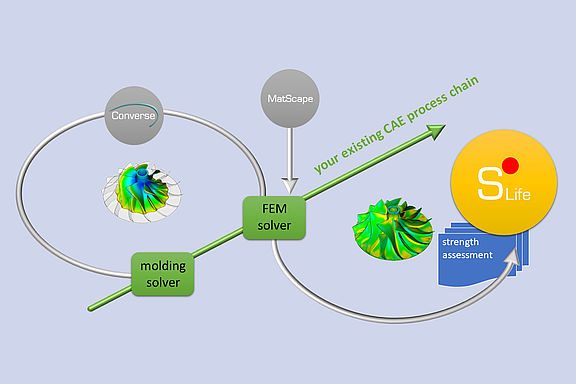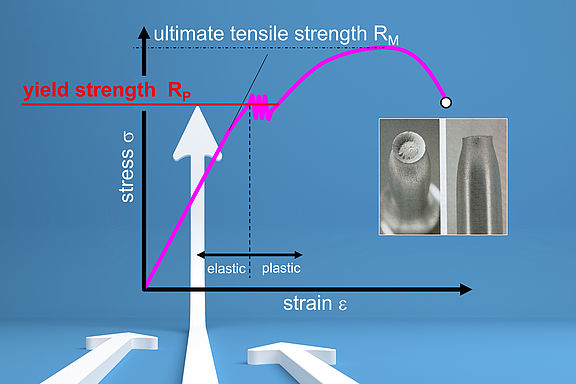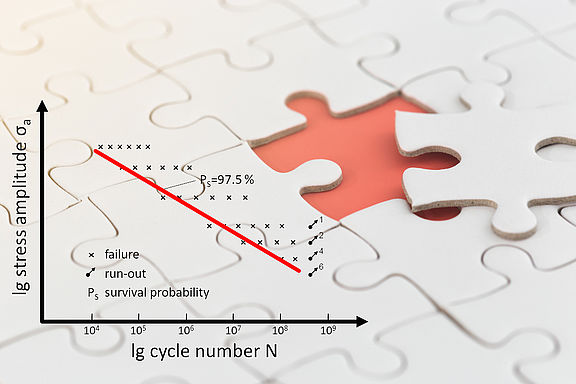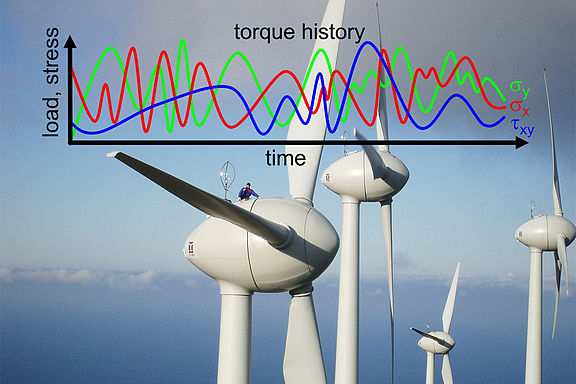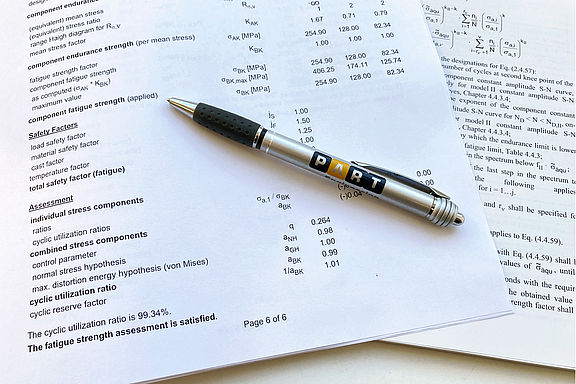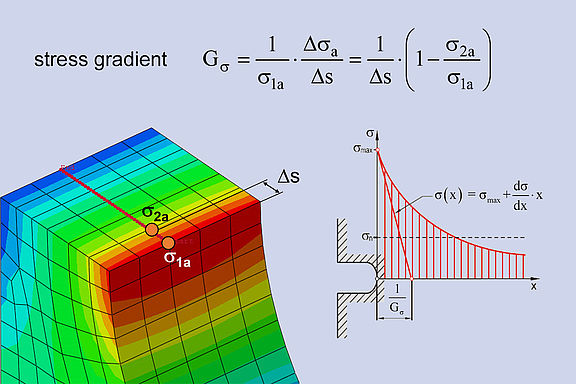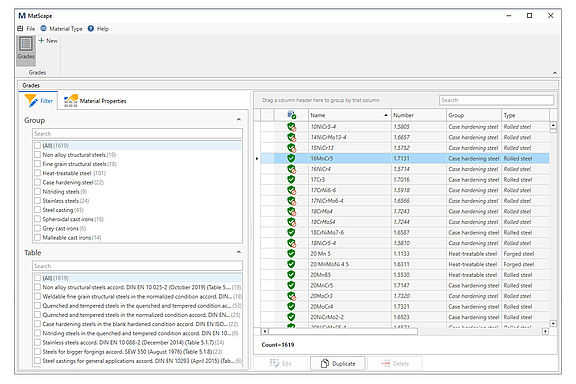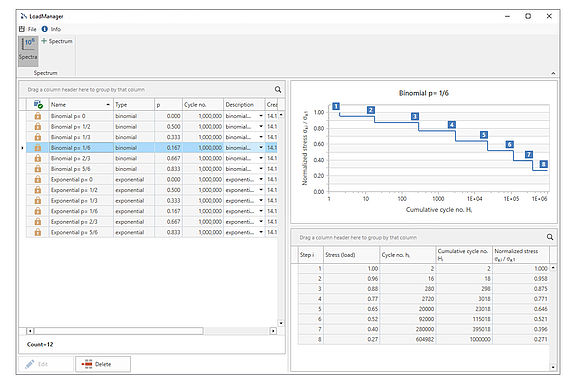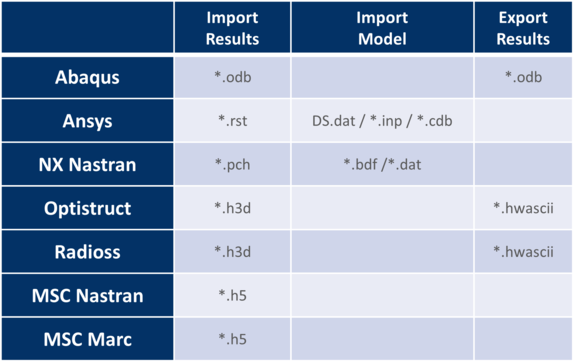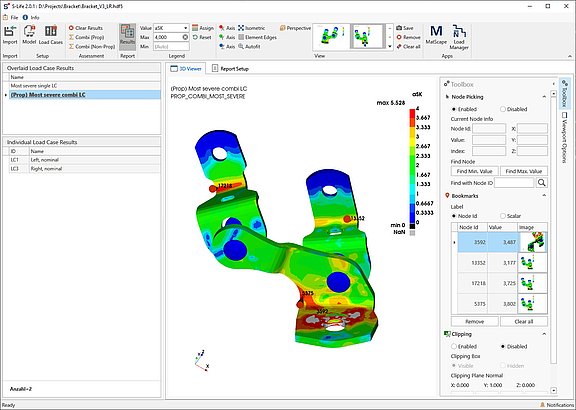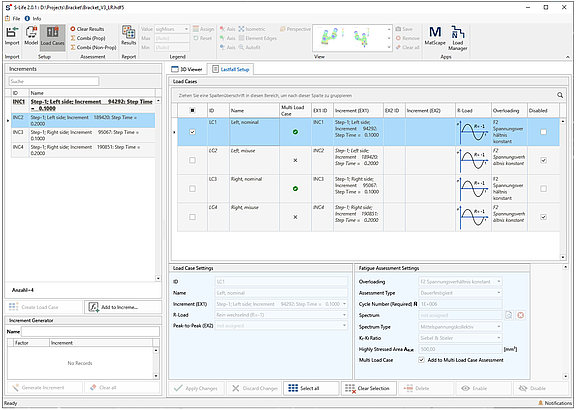Strength Assessment of Machine Components
What is S-Life FKM?
S-Life FKM is the strength assessment software within the PART software suite for steel, cast iron and aluminum materials. Results from a structural simulation are automatically assessed according to the FKM guideline [1]. The software is used as a post-processor.
With S-Life FKM, mechanical stresses from FEM simulations are processed in a simple way so that an evaluation of static strength and fatigue strength is possible. As a result, among other things, the static and cyclic utilization ratios of the component are displayed as a contour plot in accordance with the FKM guideline.
[1] Analytical Strength Assessment of Components in Mechanical Engineering in its 7th revised edition, Forschungskuratorium Maschinenbau, VDMA Verlag, Frankfurt am Main, Germany, 2020
The Problem
Missing standardized procedures
The correct assessment of simulation results determines to a large extent the benefit of the simulation in the first place. Regarding the evaluation of the mechanical strength of components, it is regularly unclear how this is to be carried out. This is particularly the case for fatigue strength. Lack of application of suitable procedures leads to uncertainty or, in the worst case, incorrect assessment results.
Material and component potential are not fully exploited
In the absence of suitable methods or due to a lack of knowledge, a conservative design limit is often used. These are often the yield strength of the material or the nominally determined fatigue strengths from S-N curves. The plastic material potential in the assessment of static strength and the fatigue notch factor in the fatigue strength assessment remain unused. Costly over-dimensioning is the result.
Missing fatigue strength properties
Frequently, the required fatigue strength properties for the given boundary conditions are not available for a specific material. The own experimental determination of these properties is time-consuming and costly. For example, the number of load cycles, mean stress sensitivity and notch influence must be considered.
Time-varying loads are difficult to take into account
In general, components are subject to multiple independent time-varying loads. This regularly leads to the problem of how to evaluate the resulting stresses in terms of their damage potential. Also, the critical load case combination as such is often unknown. The solution of these problems is algorithmically complex and usually only possible with computer assistance.
How does S-Life FKM solve the problem?
The FKM guideline is the de-facto standard for the strength assessment of metallic components in general mechanical engineering. The guideline has been successfully used industrially for almost three decades. With a volume of approx. 230 pages, the strength assessment of metallic components is presented in a comprehensive and structured manner.
With the help of S-Life FKM the processing of local stresses obtained from FE analyses regarding static strength and fatigue strength in accordance with the guideline is carried out almost at the push of a button. S-Life FKM requires the results of a structural simulation as input.
S-Life FKM ensures that work is carried out according to the current state of the art. Unambiguous, user-independent results are achieved. A comprehensive documentation of the applied procedure is given by the guideline itself. In addition, S-Life FKM provides a detailed assessment report for the critical hot spots investigated. A plausibility check and communication of the results is thus easily possible.
Components made of ductile materials may often be loaded far into the plastic range of the material under certain static load conditions. S-Life FKM evaluates the local stress situation in the component and automatically decides whether and to what extent a plastic material potential can be exploited. This allows more cost-efficient design, as over-dimensioning is avoided.
Likewise, with S-Life FKM, a fatigue notch effect is considered in the fatigue strength assessment in the case of local stress gradients. Compared to an evaluation based on nominally determined S-N curves, the fatigue strength assessment can often be carried out much less conservatively. This also avoids over-dimensioning and thus unnecessary costs.
The S-Life FKM material database contains strength properties of more than 1600 steel, cast iron and aluminum materials. Own materials can be entered. The concept of standard S-N curves used in the FKM guideline automatically determines the required fatigue strength properties for the endurance limit or finite life strength assessment from static strengths properties. S-Life FKM thus enables fatigue strength assessments to be carried out without time-consuming experimental determination or research of fatigue strength properties.
Time-varying loads with multi-level amplitudes are considered with S-Life FKM in accordance with the Miner damage accumulation approach. For this purpose, S-Life FKM offers a selection of standard load spectra via the integrated load-manager. Own spectra can be added easily. S-Life FKM also allows fatigue strength assessments to be carried out for independently acting multi-axial non-proportional loads. The load-combinator integrated in S-Life FKM can be used to determine the locally most unfavorable load combination for several superimposed loads.
Some features & functionalities
- Static strength assessment and fatigue strength assessment for unwelded metallic components according to the FKM guideline [1].
- Material database with more than 1600 materials (steel, cast iron, aluminum), own materials can be entered
- Load-manager with integrated standard spectra (binomial and exponential), own spectra can be entered
- Load-combinator for stress preprocessing (addition, subtraction, multiplication) including determination of critical load combinations for multiple simultaneous loads
- Handling of non-proportional multi-axial stresses according to FKM guideline
- Display of static and cyclic load utilization ratios on the component as a 3D contour plot
- Comprehensive reporting of the assessment results per selected node in pdf format
- 3D viewer for displaying and evaluating results
- Interfaces to commercially available structural simulation programs. Details can be found in the table on the right.
Benefit
S-Life FKM provides static and fatigue strength assessments for metallic components in accordance with the FKM guideline. This ensures that you are working according to the state of the art. Due to the ease of use, a comprehensive strength assessment can be carried out almost at the push of a button.
S-Life FKM reduces
- Costs for material testing, since strength properties are already included or determined in accordance with the guideline
- Development time, since the simple automated application eliminates laborious manual assessments
- Errors, since the automated procedure avoids incorrect settings and misinterpretations to the greatest possible extent
- Part and rework costs, as over- or under-dimensioning is avoided through guideline-compliant strength assessment
S-Life FKM increases
- Reliability of the strength assessment, since standardized procedures are applied in accordance with the state of the art by reflecting the FKM guideline
- Confidence in the strength assessment, since the comprehensive documentation makes the applied procedures understandable and verifiable
Users say
Our mills are dynamically severely loaded. S-Life FKM enables us to conduct a comprehensive strength assessment and component optimization in a simple and fast way. The program also facilitates the documentation of the analysis.
The extreme dynamic loads and nonlinear characteristics of our parts cause non-proportional dynamic stress responses. S-Life FKM allows us to evaluate and asses all critical load combinations in a matter of minutes.
We use S-Life FKM to evaluate our FE analyses of generator rotors. The intuitive and fast handling reduces considerably our evaluation and documentation effort.
Brochures
Get S-Life FKM
Please contact us for an individual quote without obligation
S-Life FKM can also be accessed through the Altair Partner Alliance, learn more here.
